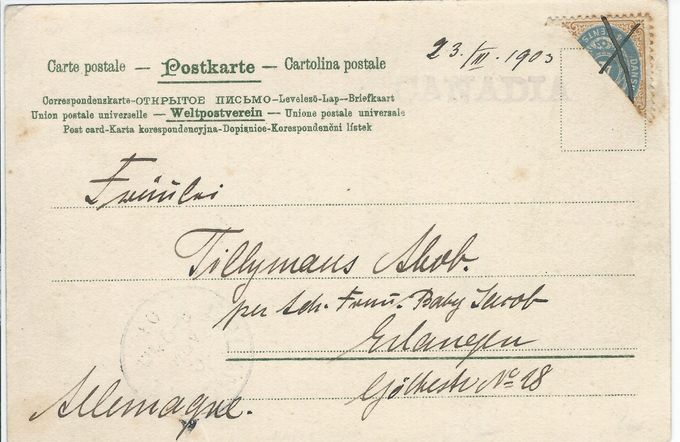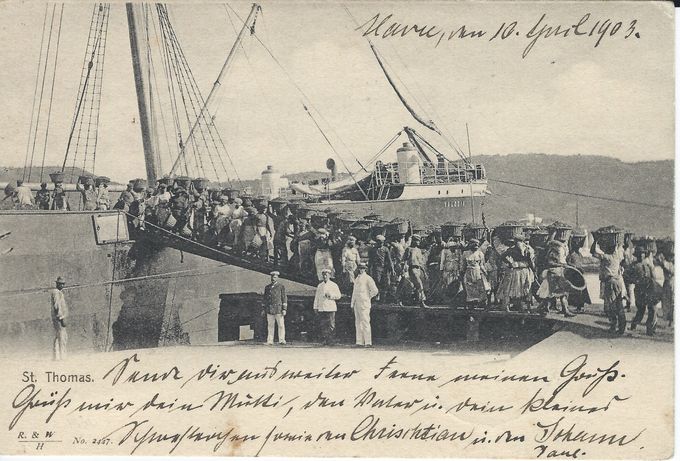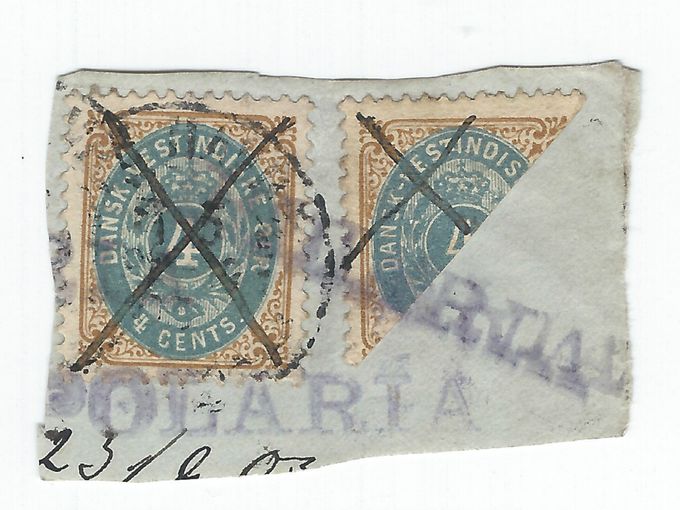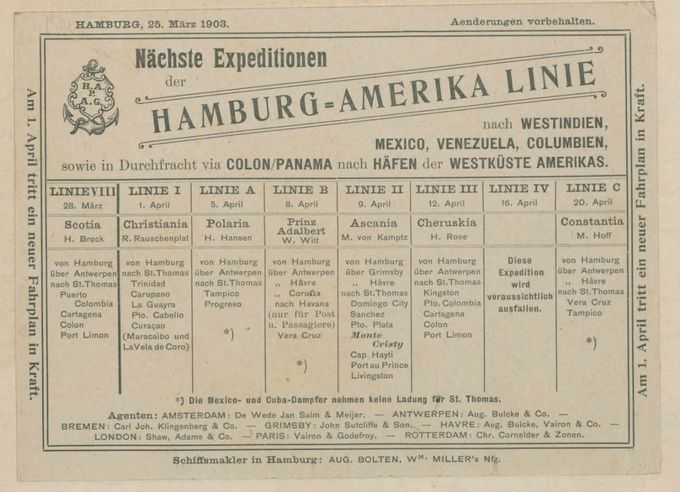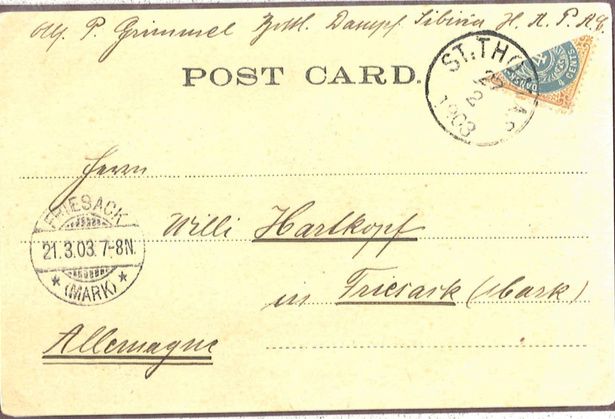POSTCARDS MAILED ON GERMAN STEAMERS
Postcard with bisected 4 cents sent to Germany - pen canc. (tied) purser S/S CANADIA and ms date 23/III 1903.
COVERS MAILED WHILE ON BOARD A GERMAN SHIP
The purser of the ship could keep a supply of stamps from the country where the ship departed, and under the UPU rules he would post them in the first port of call where they would be accepted without penalty.
This practice is allowed today - a century later. The German steamers had their own cancels with the name of the ship - that sometimes would be used for cancelling the stamp. On other occations the purser would use a pen and ink to write the date on the stamp. Yet another practice would be to mark the stamp with an "X" with the date written on the envelope or postcard in combination with the name of the ship stamped closely to the date.
All German/DWI steamship postcards/covers are highly sought after. I am aware of 5 (6 also counting one lacking the bisected stamp) postcards having a bisected 4-cents stamp mailed to Germany receiving the pen cancellation.
Frontside of the postcard - Note - dated (Le) Havre on April 10 1903 from which the postcard was sent to Germany.
Bisected and single 4 cents used on a partial from a cover. Pen canc. purser stamp “POLARIA” - dated Sep 23 -1903 - the last known usage of a bisected 4 cents. White dot between T and I - flaw - Printing 3 pos. 4.
PLEASE SEE THE PAGE LAST KNOWN USAGE FOR A DETAILED REVIEW ON THIS UNIQUE PARTIAL.
See bottom page for a Historical Note on SS Polaria.
Overview of arrival/departure dates of the various vessels of the Hamburg-Amerika Linie - April 1903. Also shows their routes.
St.Thomas February 27 to Friesack in Germany. Delivered aboard the HAPAG steamer “Sibiria” marked by manuscript. Arrival March 21. (Frank Banke)
HISTORICAL NOTE ON POLARIA
POLARIA 1882
The POLARIA was built by C.Mitchell & Co, Walker-on-Tyne in 1882 for the Carr Line of Hamburg. She was a 2,724 gross ton ship, length 300ft x beam 38.2ft, straight stem, one funnel,
two masts, iron construction, single screw and a speed of 10 knots. There was accommodation for 1,100-3rd class passengers only. Launched on 21st Feb.1882, she sailed on her maiden voyage from Hamburg to New York on 27th Apr.1882. In April 1888 she made her
last Hamburg - New York voyage for the Carr Line and in May of that year went to the Hamburg America Line with the rest of the Carr Line fleet. On 16th Jun.1888 she commenced
her first Hamburg - New York crossing for her new owners and on 22nd Sep.1889 started sailings between Stettin and New York. She commenced her last voyage on this service (Stettin - New York)on 12th Mar.1893 (20 round voyages) and on 6th Jun.1895 started her
last Hamburg - New York voyage. On 28th Aug.1895 she commenced her last Hamburg - Philadelphia - Baltimore crossing. In July 1903 she went to a British company and later the same year was resold to German owners and scrapped in 1904 at Hamburg. [North Atlantic
Seaway by N.R.P.Bonsor, vol.1,p.395]
Del siden
